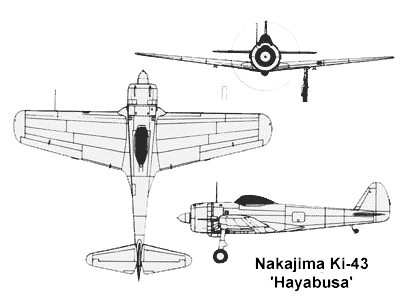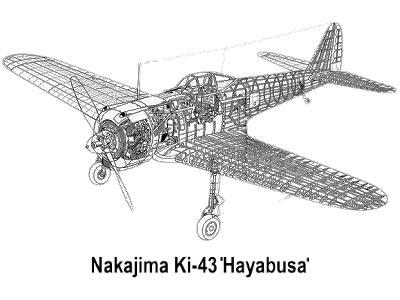The Nakajima Ki-43 'Hayabusa' (meaning 'Peregrine Falcon') was a single-engine land based tactical fighter used by the Imperial Japanese Army Air Force in World War II. The Ki-43 was originally designed to be the successor to the Ki-27. The army designation was "Army Type 1 Fighter"; the Allied reporting name was 'Oscar', however, due to its resemblance of the Mitsubishi A6M 'Zero', Allied pilots would often mistake it, so it became the 'Army Zero'.
Development
The Ki-43 was designed by Hideo Itokawa, who would later become famous as a pioneer of Japanese rocketry. The Ki-43 prototype was produced in response to a December 1937 specification for a successor to the popular fixed-gear Nakajima Ki-27 Nate. The specification called for a top speed of 500 km/h (311 mph), a climb rate of 5,000 m (16,400 ft) in five minutes and a range of 800 km (500 mi). Maneuverability was to be at least good as the Ki-27. When first flown in early January 1939, the Ki-43 prototype was a disappointment. Japanese test pilots complained that it was less maneuverable than the Ki-27 and not much faster. After several revisions, Nakajima began production at its Ota manufacturing plant. The initial production version was given the designation Ki-43-I. Deliveries from Nakajima's Ota factory commenced in April 1941. In addition to outstanding maneuverability, the Ki-43-I had a very impressive rate of climb due to its light weight. Power was provided by the Nakajima Ha-25 engine turning a two-bladed, two-position variable-pitch metal propeller. In February 1942. The Ha-25 engine was replaced by the more powerful Nakajima Ha-115 engine, which was installed in a longer-chord cowling. The new engine turned a three-bladed propeller. The wing structure, which had suffered failures in the Ki-43-I, was strengthened and equipped with racks for drop tanks or bombs. It took some time to discover that the wings were not strong enough to withstand the most violent manouvers, and a number of aircraft were lost when their wings collapsed while pulling out of a dive. Efforts to retrofit the existing aircraft to strengthen their wings were not entirely successful, but the problem was largely solved in the -II variant. The Ki-43-II was also fitted with 13 mm armor plate for the pilot's head and back, and the aircraft's fuel tanks were coated in rubber to form a crude self-sealing tank. The pilot also enjoyed a slightly taller canopy and a reflector gunsight in place of the earlier telescopic gunsight. The Ki-43 was equipped with two cowling machine guns in various configurations, with either two 7.7 mm (.303 in) Type 97 machine guns, one 12.7 mm (.50 in) Ho-103 machine gun and one 7.7 mm (.303 in) gun, or two 12.7 mm (.50 in) Ho-103 guns; the aircraft was given various sub-designations to reflect these differences. The configuration that appears to have been most prevalent at the outset of the war was the first configuration with two 7.7 mm (.303 in) Type 97 machine guns. Prototypes for the Ki-43-II flew in February 1942.
Back to Top
In Service
The light weight and large wing area gave it a small turning radius and a high rate-of-climb which was ideal for pilots in close combat fighting. However, the Ki-43's swiftness and agility came at a price, with the low-wing design meaning that firepower and safety had to be sacrificed. With only two machine guns, a Ki-43 pilot would have to perform a dangerous balancing act between achieving a high rate of kills and their own survival. More Japanese pilots achieved Ace status flying the Hayabusa than any other plane and despite being steadily outclassed by newer fighters. The first version, Ki-43-I, entered service in 1941, the Ki-43-II in December 1942, the Ki-43-II-Kai in June 1943, and the Ki-43-IIIa in summer 1944. At the time of Pearl Harbor it first entered combat over Malaya and Burma with 64 Air Regiment. Thanks in part to its 'butterfly' combat flaps, it was very maneuverable and a deadly dogfighter, proving an unpleasant surprise to Allied pilots. It soon became the most feared Japanese aircraft in Southeast Asia. However, it was badly undergunned and as fragile as most other Japanese fighters. The initial armament of two rifle-caliber(7.7mm) machine guns was rapidly upgraded to two heavy machine guns(12.5mm), but this was still inadequate in comparison with Allied fighters carrying at least four heavy machine guns. The -II had some armor and self-sealing fuel tanks, but still tended to disintegrate if hit by 0.50 caliber fire from an Allied aircraft. The Ki-43 was the most widely-used Army fighter, and equipped 30 sentai (groups) and 12 chutais (independent squadrons). The aircraft fought in China, Burma, the Malay Peninsula, New Guinea, the Philippines, South Pacific islands and the Japanese home islands. Some examples were supplied to the pro-Japanese regimes of Thailand, Manchukuo and Wang Jingwei Government as well. The Thai units sometimes fought against the USAAC in southern China. As the war progressed, however, the fighter suffered from the same weaknesses as the Ki-27 and the A6M ; light armor and less-than-effective self-sealing fuel tanks, which caused high casualties in combat. Its armament of two machine guns also proved inadequate against the more heavily armored Allied aircraft. In many respects the Ki-43-II resembled an Army version of the Zero, having similar strengths and weaknesses. However, it was even lighter and more maneuverable. On the other hand, the Ki-43-II was a full 40 miles per hour (60 kilometers per hour) slower than the A6M, making it slower than most Allied fighters.
Back to Top
Towards the end, the Oscar's excellent maneuverability could still gain advantage over rash Allied pilots. From October to December 1944, for the loss of 17 Ki-43s that were shot down in air combat, their pilots claimed seven C-47s, five B-24 'Liberators', two Spitfires, two Beaufighters, two Mosquitoes, two F4U 'Corsairs', two B-29 'Superfortresses', one F6F 'Hellcat', one P-38, and one B-25. However, compared to what the Allies were producing and the number of losses suffered by the IJAAS, it was nothing more than a drop in the ocean.
Like most Japanese combat types, many Ki-43s were at the end expended in kamikaze raids. The Ki-43 was produced until the end of the war, but production of the -III was turned over to Tachikawa to allow Nakajima to focus on production of the superior Ki-84 'Frank'.
A total of 5919 Ki-43s of all types were produced from the Ota and Tachikawa factories during the war.
Back to Top
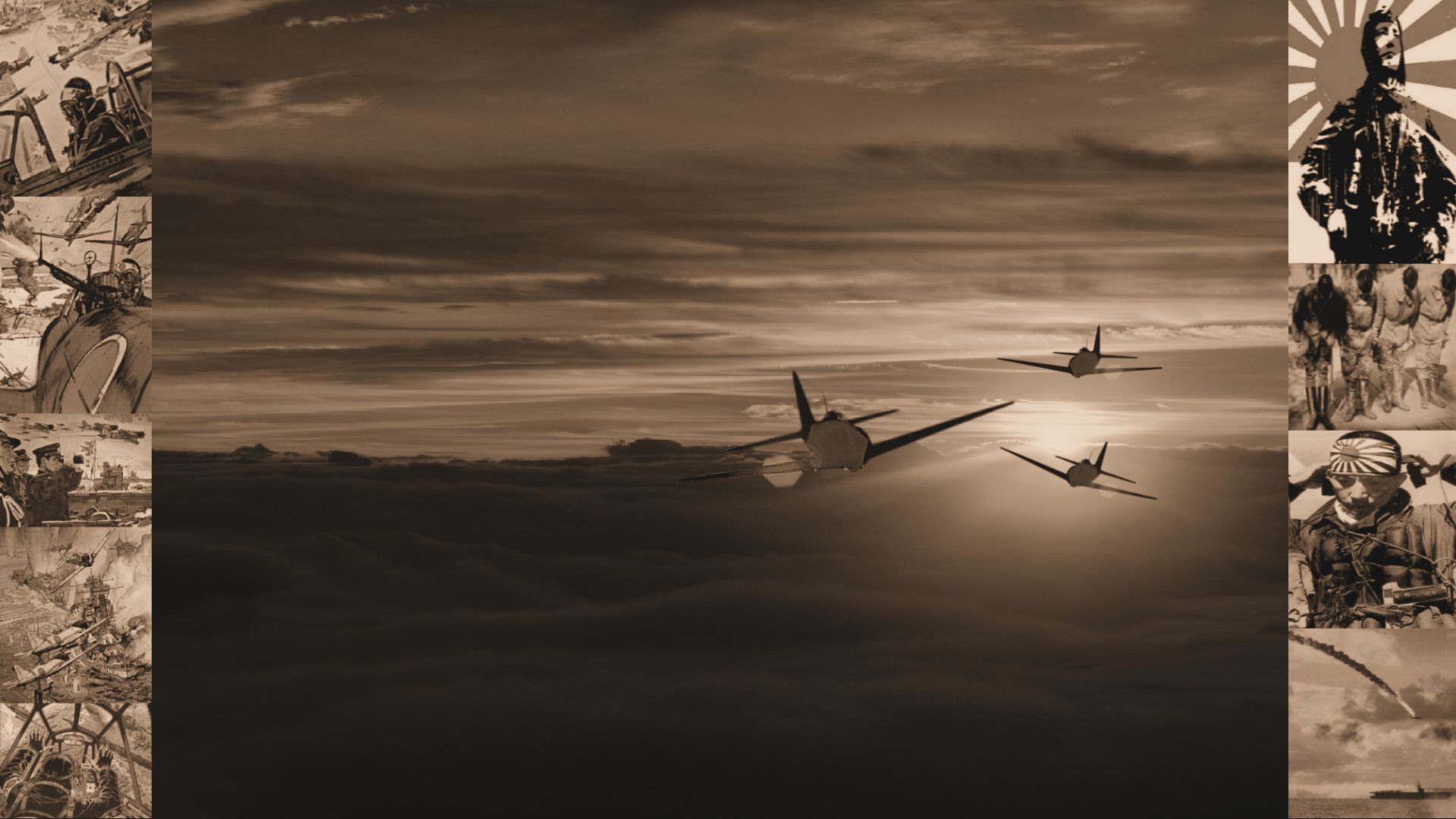



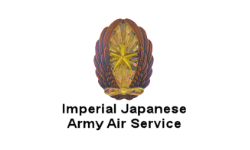
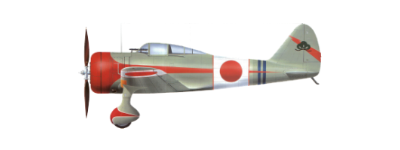 Ki-27
Ki-27 Ki-44 Shoki
Ki-44 Shoki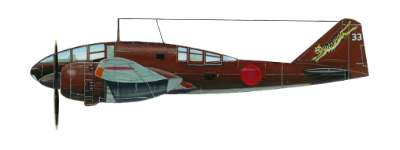 Ki-46
Ki-46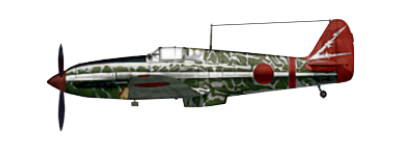 Ki-61 Hien
Ki-61 Hien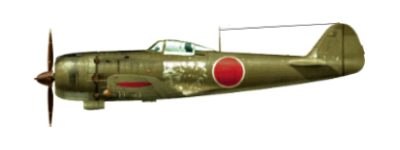 Ki-84 Hayate
Ki-84 Hayate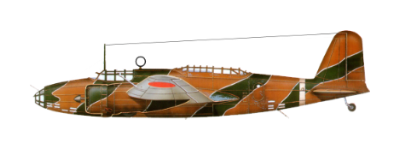 Ki-21
Ki-21 Ki-67 Hiryu
Ki-67 Hiryu
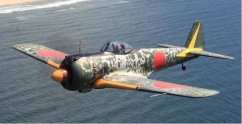

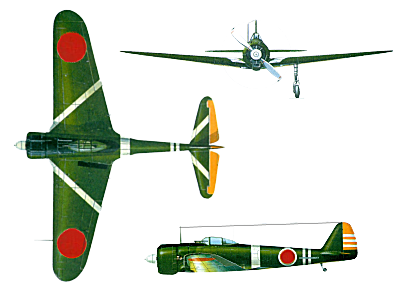
 Nakajima Ki-43
Nakajima Ki-43